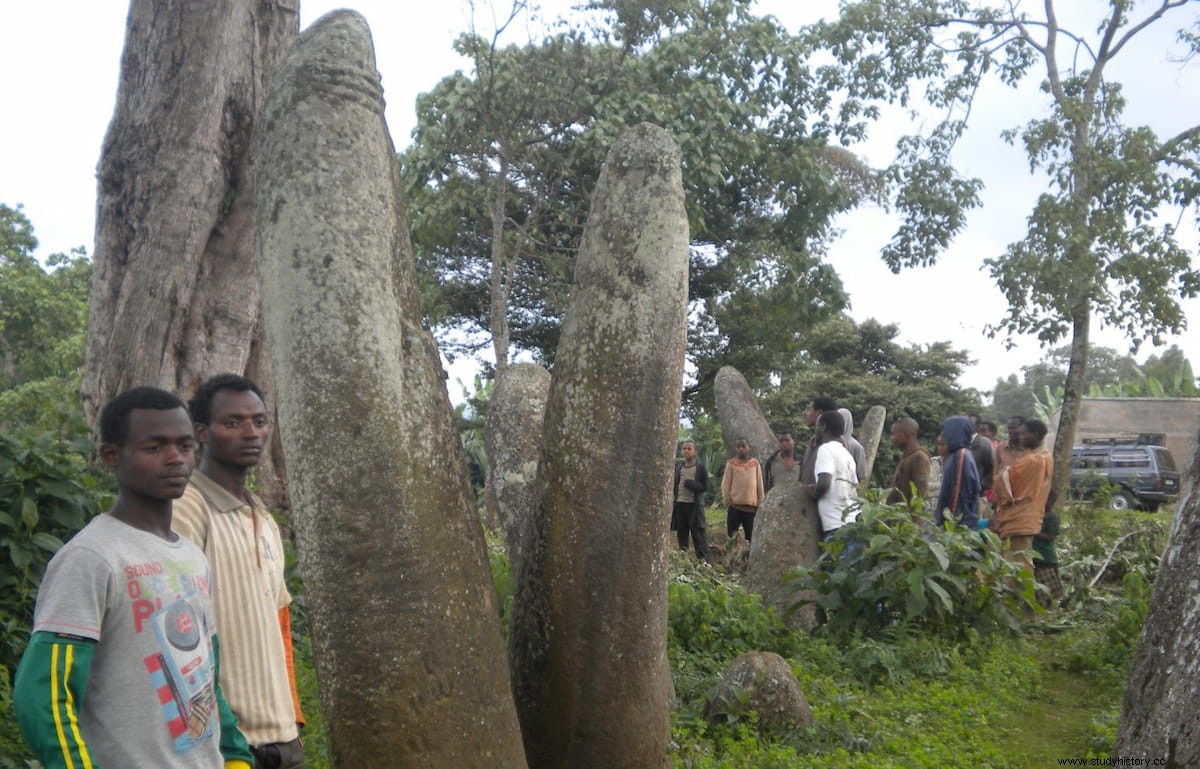Ancient stone monoliths in southern Ethiopia, up to six meters tall, are 1,000 years older than scientists thought, according to a new study published in the Journal of African Archaeology .
A Washington State University research team used advanced radiocarbon dating to determine that the monoliths at the Sakaro Sodo archaeological site in the Gedeo area of Ethiopia were likely created sometime in the 1st century AD.
The only other attempt to determine the age of the more than 10,000 monolithic stelae located at various sites in the Gedeo area was made by French scientists in the 1990s. They provided a much more modest date of construction, around 1100 AD, for the monuments of Tuto Fela, in the northern part of Gedeo.

Listed as a UNESCO World Heritage Site, Sakaro Sodo and other archaeological sites in the Gedeo area boast the largest number and concentration of megalithic stelae monuments in Africa. Standing stones vary greatly in size, function, and arrangement in the landscape.
Although many of the monoliths have fallen and/or are undecorated, a few have intricate faces and other anthropomorphic designs carved into the stone that can be seen today. Little is known about why or how the monoliths were built.
This is one of the least studied archaeological sites in the world, and we wanted to change that situation , says Ashenafi Zena, the study's lead author and a former WSU doctoral researcher who now works at the North Dakota State Historical Society.

A native of Ethiopia, Zena originally decided to conduct a study of the stones after traveling to the region with her doctoral advisor Andrew Duff, a WSU professor of anthropology, in 2013. It was shocking to see such a large number of monuments in such a small area Zena said. Seeing the stones, many of which had fallen to the ground and some have broken into pieces, I decided to focus my dissertation work there instead of investigating cave sites in southern Ethiopia .
In addition to delaying the construction date of the first monoliths by a millennium, the researchers also determined where the ancient builders of the place probably got the rough stone to build them. They also identified, for the first time, the earliest known sources of obsidian artifacts recovered from the Gedeo stelae sites.
Surprisingly, most of the obsidian identified by the researchers at Sakaro Sodo came from some 300 kilometers away in northern Kenya, showing that the people of Sakaro Sodo obtained most of their obsidian raw materials through some form of obsidian. form of exchange or trade.

Although little is known about the herders and/or farmers who populated the Sakaro Sodo region of southern Ethiopia at the end of the first millennium, the new dates of construction of the megalithic monuments identified by Zena and Duff seem to coincide with the arrival of domesticated animals to the region and the beginnings of more complex social and economic systems.
One of the reasons this research is important is because it has the potential to shed new light on what the early inhabitants of this area did for a living, as well as what their cultural and social practices were said Duff.
Existing archaeological, ethnographic, and megalithic stela traditions in the region suggest that Ethiopia's oldest stela sites at Sakaro Sodo and other nearby locations were likely created for two purposes:to commemorate the transfer of power from one generation to the next or to record and commemorate the achievements of the group.
The diversity of functions of the stelae in Ethiopia is really fascinating Duff said. For example, we know that the most recently built stela monuments from Tuto Fela, in the northern part of Gedeo, were used as burial markers. While the linear laying pattern of the foundation stones at Sakaro Sodo suggests that they may have been markers to signify the passing of generational leadership .
Despite the political situation, the researchers have several future projects underway that they hope to continue as soon as possible. One of them is to carry out further archaeological investigations at other stelae sites in the area with colleagues from Addis Ababa University. The other is a project led by Duff and current WSU Ph.D. student Addisalem Melesse, who are working with the Ethiopian Department of Archeology and Heritage Management to determine how stelae sites can best be managed to preserve the heritage of Ethiopia. the region and generate tourism.
Getting a better understanding of the function of these stones and how they were erected is really helpful in achieving UNESCO World Heritage designation Duff said. This, in turn, could help generate income from tourism, which is an important economic factor for the country .
